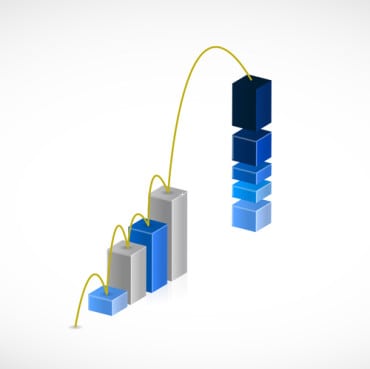
Many supply chain organizations aim to make their operations smarter by investing in generative AI, data analytics, automation, digital twins, machine learning, Internet of Things, and more.
Supply chains have always been vulnerable to events and glitches, flummoxing even the most well-managed companies and services. Will real-time artificial intelligence finally bring some sense to this complex endeavor? Or is it only the latest elixir being pitched as a remedy for all ills?
By nature, supply chains rely on many, many moving parts to deliver as needed. Many of these parts are disparate, ranging from raw materials providers to factories to trucks to ships to warehouses to retailers. Will decision makers and managers ever get a full view of what is going on? Likely not. But technologies such as artificial intelligence are poised to help fill gaps in knowledge, providing insights to predict and overcome issues that arise. And that’s a step in the right direction.
The “smart” supply chain is now here and a reality, thanks to a constellation of technologies including generative AI, data analytics, automation, digital twins, machine learning, Internet of Things, blockchain and more, a new report from KPMG states.
At this time, the consultancy finds, 50% of supply chain organizations indicate they are investing in applications that support such technologies. The report’s authors outline the ways in which this next generation of technologies is bringing intelligence to today’s supply chains:
Generative AI in operations: GenAI “has the potential to revolutionize supply chain management, logistics and procurement,” the KMPG authors relate. GenAI “can help ensure procurement and regulatory compliance, streamline, and enhance the efficiency of manufacturing production workflows, or enable virtual logistics communication by using virtual assistants to handle routine inquiries and provide quick responses.” In addition, GenAI “can also learn —and teach itself — about the nuances of any given company’s supply chain ecosystem, allowing it to refine and sharpen its analysis over time.”
See also: Generative AI Brings Real-Time Supply Chains Closer to Reality
To leverage GenAI in supply chains, the KMPG authors urge planning professionals “to increase their skills in analytical modeling capability, cross-functional expertise, and relationship management to maximize collaboration.”
AI-enabled no-touch/low-touch planning: Effective scenario analysis is essential to determine the financial consequences of supply-chain decisions, the report states. “AI-enabled sales and operational planning and integrated business planning applications will help eliminate the gap between supply chain planning and execution. Low touch-planning will take large swaths of manual work out of the end-to-end planning process and leverage the power of advanced analytics to answer deeper questions with minimal human intervention. AI will be able to analyze data at scale, identify anomalies, search for patterns that lead to unexpected disruptions, and make suggestions on how to solve them—almost instantaneously.”
Data power: “Each day, millions and millions of date records are generated across the supply chain from multiple systems,” the KPMG report states. “This wealth of data has given rise to greater silos of data within the organization which in turn has led to disconnected data sets. Supply chain professionals must manage the complexities within their data landscape efficiently; to be able to make informed decisions and enhance their operations.
Building a data-driven approach means “focusing on specific use cases” that helps organizations “prioritize data quality improvements where they matter most, thereby gradually refining and improving their datasets.” The KPMG team urges a “laser focus on the critical elements of data availability, quality, reliability, cadence, and consistency.”
Transparency and visibility beyond Tiers 1 and 2: At least 43% of supply chain managers have limited to no visibility of tier-one supplier performance. “The lack of visibility across the layered tiers of a supply chain has major implications for organizations across industries, particularly for meeting regulatory requirements, and for the identification and mitigation of supply chain risks. Technology tools such as control towers and digital twins can surface critical sub-tier supplier relationships, highlight common sub-tier suppliers, factory locations and provide clear insight into the depth of an organization’s supply chain. When implemented at scale they can improve supply chain resilience.”
Low-code platforms: Low-code platforms enable managers and administrators to jump quickly on disruptions or changes in their supply chains by tweaking or launching new applications. “These cut the development time, enabling companies to swiftly react and adapt their applications to new market conditions, disruptive events, or changing strategies,” the KPMG authors state. “It enables business users with little technical knowledge to quickly build, test and implement new capabilities. Potential applications span planning, manufacturing, product life cycle, supply chain collaboration, and track and trace.”





























